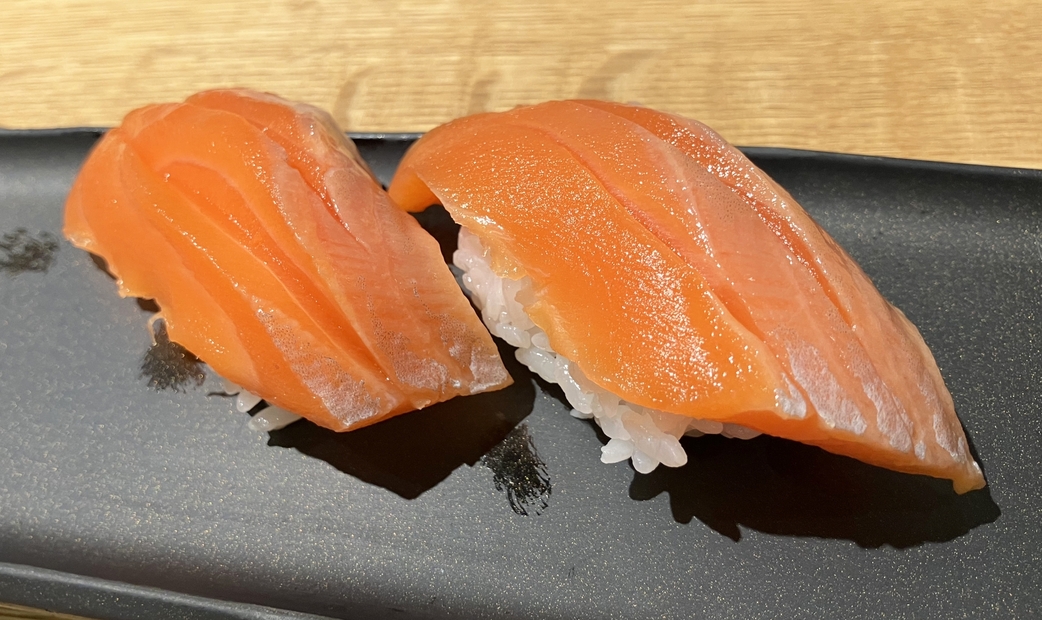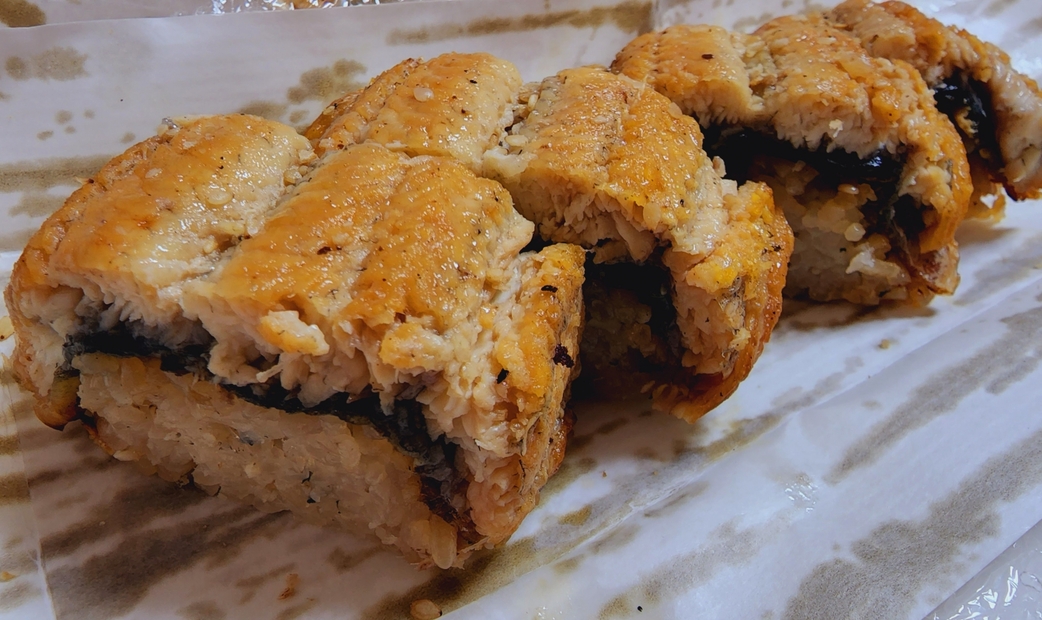
The Ultimate Guide to Sushi Neta: Exploring Varieties, Safety, and History!
The OMAKASE editorial team, an official partner of the Michelin Guide, breaks down what sushi neta is.
What is Sushi Neta?

In the world of sushi, neta (topping) refers to the main ingredient placed on top of the rice in nigiri sushi or wrapped with rice and seaweed in maki sushi. Traditionally, in Edo-style sushi, the neta often consisted of processed seafood to enhance preservation. While seafood remains the most common choice for sushi neta today, vegetables and even meat can also be used.
Difference Between Sushi Neta and Sashimi

At first glance, sushi neta and sashimi may look similar, as both are typically slices of raw fish. However, they are enjoyed in different ways. Sushi neta is combined with rice (shari) and eaten in one bite, while sashimi is served and eaten on its own. Skilled sushi chefs carefully calculate the ideal thickness of each sushi neta to perfectly complement the rice.
Many foreign visitors mistakenly think that sushi and sashimi are the same dish, but they are, in fact, distinct culinary experiences. It's important to note that while sushi can be eaten with either fingers or chopsticks, sashimi is traditionally eaten only with chopsticks.
Is Raw Fish Safe to Eat?

In Japan, eating raw food is an integral part of the culture. It’s not limited to raw fish, as raw meat is also commonly enjoyed. Japanese people have long embraced the tradition of eating fresh fish raw with confidence, thanks to established safety practices.
At Japanese sushi restaurants, fish is carefully stored and handled to maintain freshness and hygiene, allowing customers to enjoy raw fish with peace of mind. For example, sushi neta like tuna (maguro) and sea bream (tai) are typically served at peak freshness. Meanwhile, some types of fish, such as mackerel (saba) and horse mackerel (aji), may undergo vinegar curing or light cooking to enhance safety.
Types of Sushi Neta
Tuna (Maguro)

Tuna (Maguro) is a staple in sushi, but its flavor varies significantly depending on the cut. Popular cuts include Otoro, Akami, and Negitoro. Maguro is commonly served as nigiri, hosomaki (thin rolls), and gunkan maki (battleship rolls). Among the varieties of tuna caught in Japan, Ōma tuna from Aomori Prefecture is considered the most high-end, with some fetching prices of several hundred million yen per fish.
Each sushi restaurant has its own standards for maguro, but high-end establishments, in particular, put great effort into sourcing the best quality tuna.
Yellowtail (Hamachi)

Yellowtail (Hamachi) is a popular sushi neta in both Japan and the United States. Although hamachi and buri are technically the same fish, in recent years, the terms have come to be used differently. Hamachi typically refers to farmed yellowtail, while buri generally refers to wild-caught yellowtail.
In Japan, hamachi is commonly served at casual sushi restaurants, but is rarely offered at high-end establishments. However, when wild, branded hamachi is in season, it is occasionally served at upscale sushi restaurants.
Salmon (Sāmon)

Salmon is a favourite sushi neta in both Japan and the United States. Due to its rich, fatty texture, it is sometimes served lightly seared (aburi) to enhance its flavor. In Japan, salmon is mainly served at casual sushi restaurants, and is rarely offered at high-end establishments. On the other hand, salmon roe (ikura) is often served at upscale sushi restaurants, as it is considered a delicacy.
Gizzard Shad (Kohada)

Kohada is a classic neta in Edo-style sushi. This small fish is pickled in vinegar, giving it a light and refreshing taste. In the Edo period, there was a saying: "Only true sushi connoisseurs eat kohada.", reflecting its long-standing reputation as a traditional and respected sushi neta.
One particularly prized form of Kohada is Shinko, the juvenile version of the fish, which is available only for a short period in summer. Due to its rarity, Shinko can command a higher price per gram than even the finest tuna.
Conger Eel (Anago)

Conger eel (Anago) is a signature neta for nigiri sushi. The eel is simmered in a rich, sweet-and-salty sauce and then finished with a separate thick, sweet-and-salty glaze called nitsume, which greatly complements its soft, fluffy texture. Unlike other sushi neta, Anago is not dipped in soy sauce, as the nitsume already provides a deep, flavorful coating.
In the United States, anago is often confused with unagi (freshwater eel), but they are entirely different fish.
Freshwater Eel (Unagi)

While unagi sushi is a staple at American sushi restaurants, it’s less commonly served as sushi in Japan. Instead, unagi is usually enjoyed as unajū, a dish where grilled eel (kabayaki) is served over rice in a lacquered box.
However, in the Kansai region, unagi nigiri sushi is more traditional and can be found at local sushi spots. Unagi is known for its rich fat content and bold, hearty flavor.
Squid (Ika)

Squid (Ika) is usually served raw as nigiri, but it can also be lightly seared (aburi) or boiled to enhance the flavor. The tentacles (geso) are also commonly used as a distinct sushi neta.
Octopus (Tako)

Tako is most often served boiled, but it can also be served raw on occasion. It is known for its light, chewy texture.
Shrimp (Ebi)

In traditional Edo-style sushi, boiled kuruma ebi (Japanese tiger prawn) is typically used. Recently, however, raw shrimp has also become more common. Both varieties offer a light, naturally sweet flavor.
Salmon Roe (Ikura)
.jpg)
Ikura is made from salmon eggs marinated in soy sauce, giving them a popping texture and rich umami flavor. It is commonly served as gunkan maki, where the glossy eggs sit atop rice wrapped in seaweed.
The eggs burst in your mouth, releasing a savory liquid that perfectly complements the flavor of the seaweed. Hokkaido ikura is especially valued for its high quality.
Sea Urchin (Uni)

Uni refers to the edible gonads (ovaries or testes) of sea urchins, valued for their rich, creamy sweetness. It is most commonly served as gunkan maki or nigiri.
The best uni has no bitterness or off-flavors, offering a smooth, buttery texture with a hint of briny, oceanic aroma. Quality can vary significantly, but the most prized varieties come from Hokkaido and Nagasaki, where the pristine waters produce exceptionally flavorful uni.
Sea Bream (Tai)

Tai is a widely enjoyed white-fleshed fish in Japan, known for its delicate, refined flavor. The fat content of tai varies with the seasons, subtly influencing its flavor and texture.
Best Places to Enjoy Delicious Sushi in Japan
Udatsu (宇田津 鮨) / tokyo
This Michelin-featured restaurant in Tokyo uniquely combines sushi and art. Guests can enjoy authentic Edo-style sushi crafted from specialty rice and the highest-quality ingredients in an artistic setting. A standout dish is the signature "Herb Maki", known for its unique and innovative flavor.
- Operation hours
- Lunch:
[Mon–Fri] From 12:00 PM
[Sat, Sun & Public Holidays] From 11:00 AM / From 1:00 PM
Dinner:
From 6:00 PM / From 9:00 PM - Address
- 2-48-10, Kamimeguro, Meguro-ku, Tokyo
- Nearest station
- Nakameguro Station
- Directions from station
- 5-10 minute's walk from Nakameguro Station
- Payment methods
- Cash, Credit card
- Seats
- 1F:9 Counter Seats, 1F 1 Private Room(2~4people)
2F:5 Counter Seats or 2F 1 Private Room(4~8people) - Awards
-
Michelin

-
RF5.0Posted on :12/02/2025
-
Mateusz Kołodziejski5.0Posted on :12/02/2025
-
Mark Feygin5.0Posted on :11/30/2025
Sushi rakumi (鮨 楽味) / kyoto
This three-star Michelin restaurant in Kyoto is an extension of the renowned Gion Sasaki, offering both Kyoto delicacies and Tokyo sushi. The highly-skilled chef trained at both Gion Sasaki and the prestigious Sushi Yoshitake in Ginza, mastering techniques from both culinary worlds. Diners can enjoy dishes that blend traditional Kyoto cuisine with Edo-style sushi.
- Operation hours
- Lunch: 12:00 PM -
Dinner: 5:00 PM - 10:00 PM - Regular holiday
- Sundays, Irregular Holidays
- Price range
-
Lunch: USD 176.91 - USD 176.91
Dinner: USD 367.97 - USD 367.97 - Address
- 332-6, Miyoshi-cho, Higashiyama Ward, Kyoto-shi, Kyoto
- Nearest station
- Sanjo Station, Sanjo Keihan Station, Gion-Shijo Station
- Directions from station
- 5 minutes walk from Sanjo Station
6 minutes walk from Sanjo Keihan Station
8-minutes walk from Gion-Shijo Station - Payment methods
- Cash, Credit card
- Seats
- 8 Seats
- Awards
-
Michelin
-
Andrew Nguyen5.0Posted on :09/12/2025
-
Anna Collins5.0Posted on :01/12/2025
-
Dale5.0Posted on :12/19/2024
Sushi Yuden (鮨 悠伝) / osaka
This one-star Michelin restaurant in Osaka is managed by a chef who trained at renowned establishments, Fukuki Sushi and Sushi Mizuki. Diners can savor delectable Edo-style sushi made with carefully selected ingredients and perfectly balanced rice, served at an elegant 160-year-old cypress-wood counter.
- Operation hours
- Lunch: 12:00 PM - / 12:30 PM -
Dinner: 05:30 PM - 11:00 PM - Regular holiday
- Mondays, Irregular Holidays
- Price range
-
Lunch: USD 214.06 - USD 214.06
Dinner: USD 214.06 - USD 273.4 - Address
- 1F Kitaoka Building, 3-8-25 Ueshio, Tennoji-ku, Osaka-shi, Osaka
- Nearest station
- Tanimachi 9-chome Station
- Directions from station
- 1 minute walk from Tanimachi 9-chome Station
- Payment methods
- Cash, Credit card
- Seats
- 8 Seats
- Awards
-
Michelin

-
Christian Martin4.8Posted on :04/22/2025
-
Pamika5.0Posted on :03/13/2025
-
Daniel Mikhailov5.0Posted on :12/22/2024


